
Challenge
For this project, we paired with innovation studio WhatIf to help redesign a case tracking system for FedEx and their customer service agents. The agents’ current process was harrowing: an almost 40 year old terminal-based system, hundreds of Excel macros to augment that system’s limited functionality, multiple other applications that held bits and pieces of necessary information. They had cheat sheets of codes taped to their desks. Sometimes, they even had to use Google to track down customer info.
Solution
We created a prototype a proof-of-concept of a streamlined, innovative case tracking system that enabled agents to resolve cases as quickly and painlessly as possible. For the prototype, we focused on cases of packages being delayed in customs due to inadequate paperwork as that was the most frequent and most complex situation. Solving for the most complex use case meant a solution that would work for the vast majority of use cases.
Concept Exploration
Through previous research and a co-creation workshop, we had uncovered the agents’ most frustrating problems and dream solutions. Most of the problems came down to human error due to the manual nature of the process. Their system also had no cohesive interface so the learning curve was steep and time intensive. They also frequently needed to contact other agents around the world with urgent questions but the system made that very difficult.

We came up with several core features:
- a dashboard showing a prioritized task list with all neccessary information at the agent’s fingertips
- a case interior page showing timeline view of all actions taken on a case and any outstanding tasks, as well as a knowlege center with all relevant information
- a case notes tool with a set of prepopulated templates addressing most frequently taken actions, an acronym converter and automatic attachment recommendations-performance and progress metrics on the dashboard to help agents keep track of and optimize their performance
- colleague chat, allowing agents to discuss cases in real time with colleagues around the world-automation and streamlining of case escalation and closure shipping
We also planned out future states for all of the features in which much of the process could be automated in order to speed up case resolution and free agents to work on more complex cases.
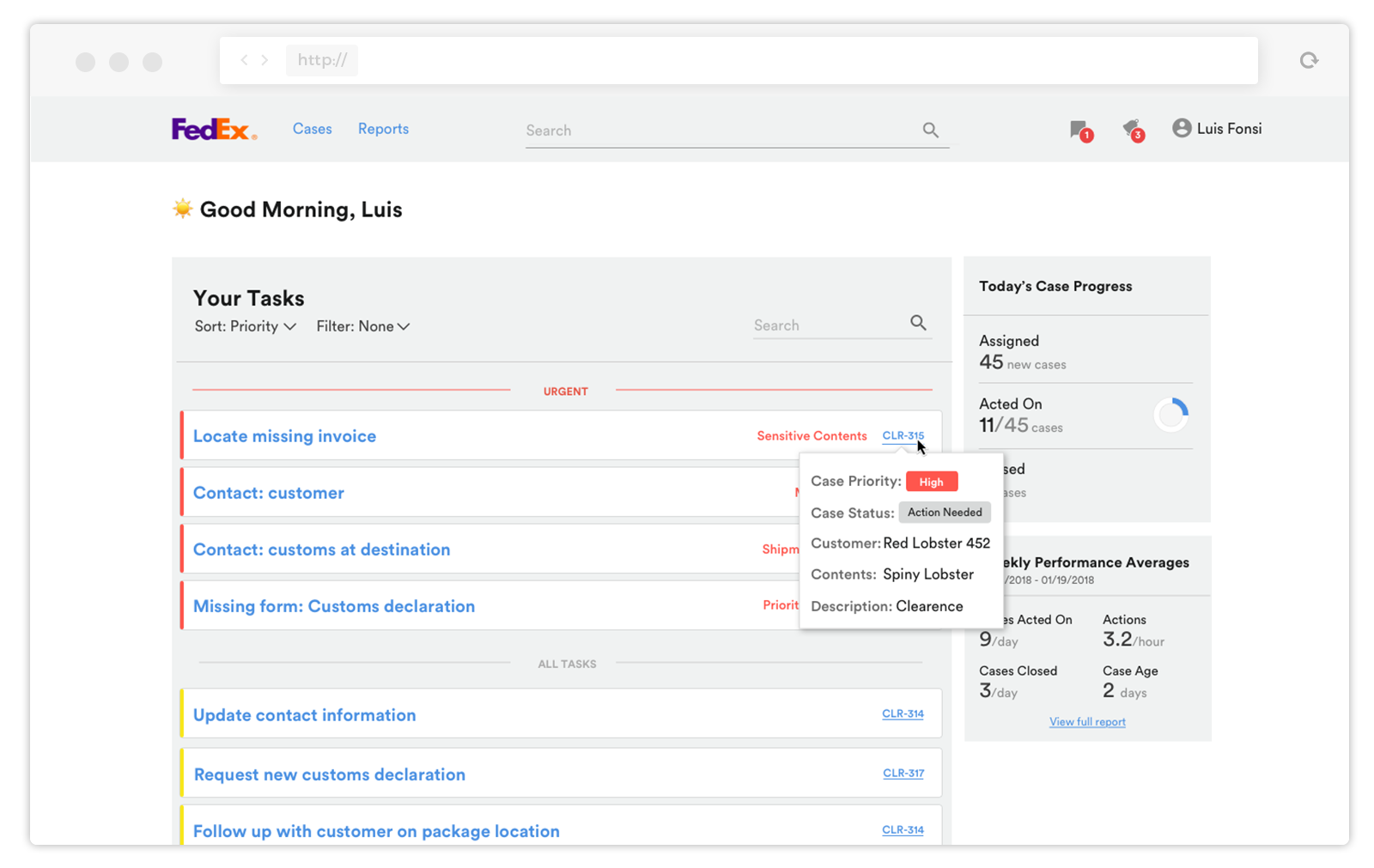
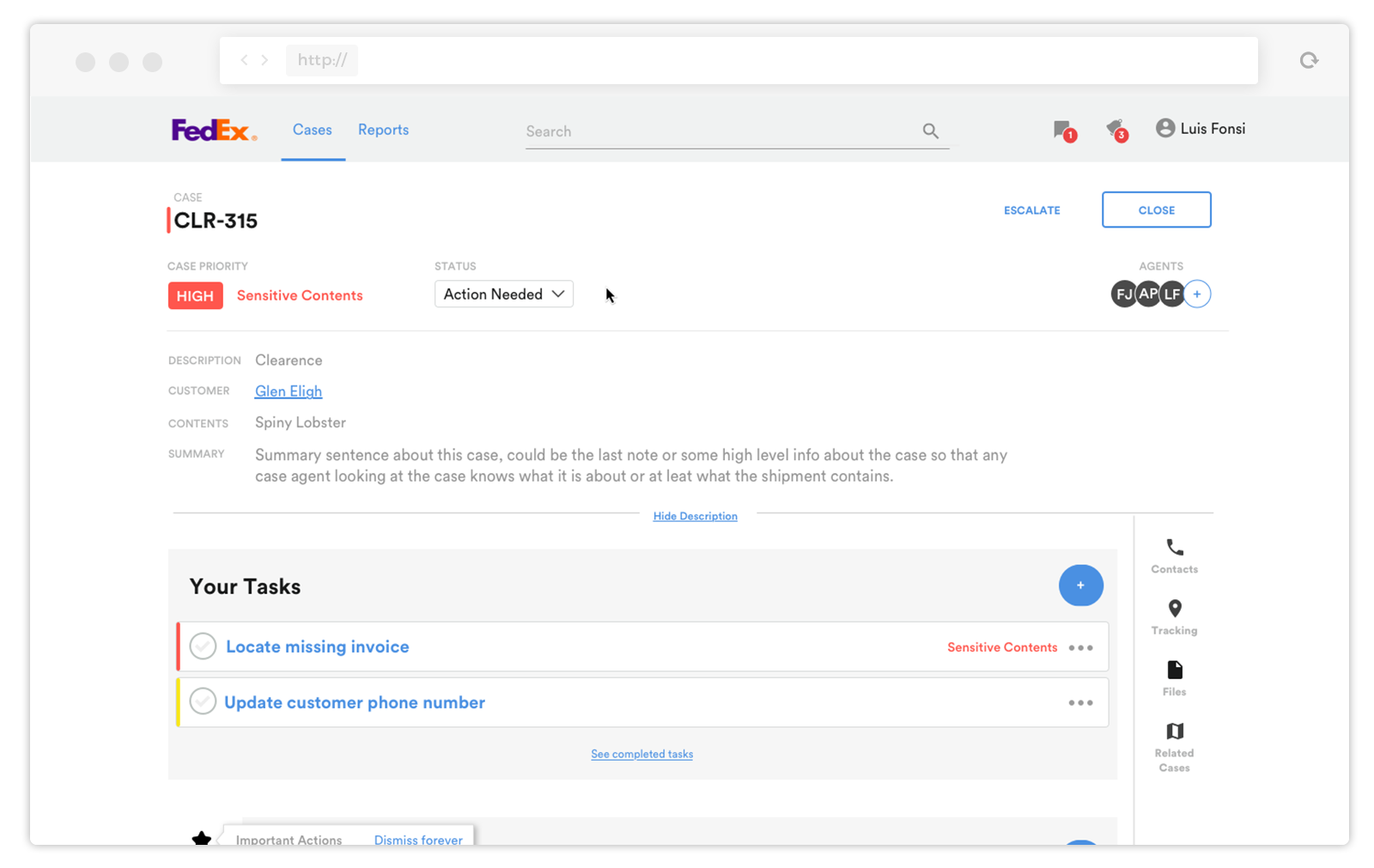
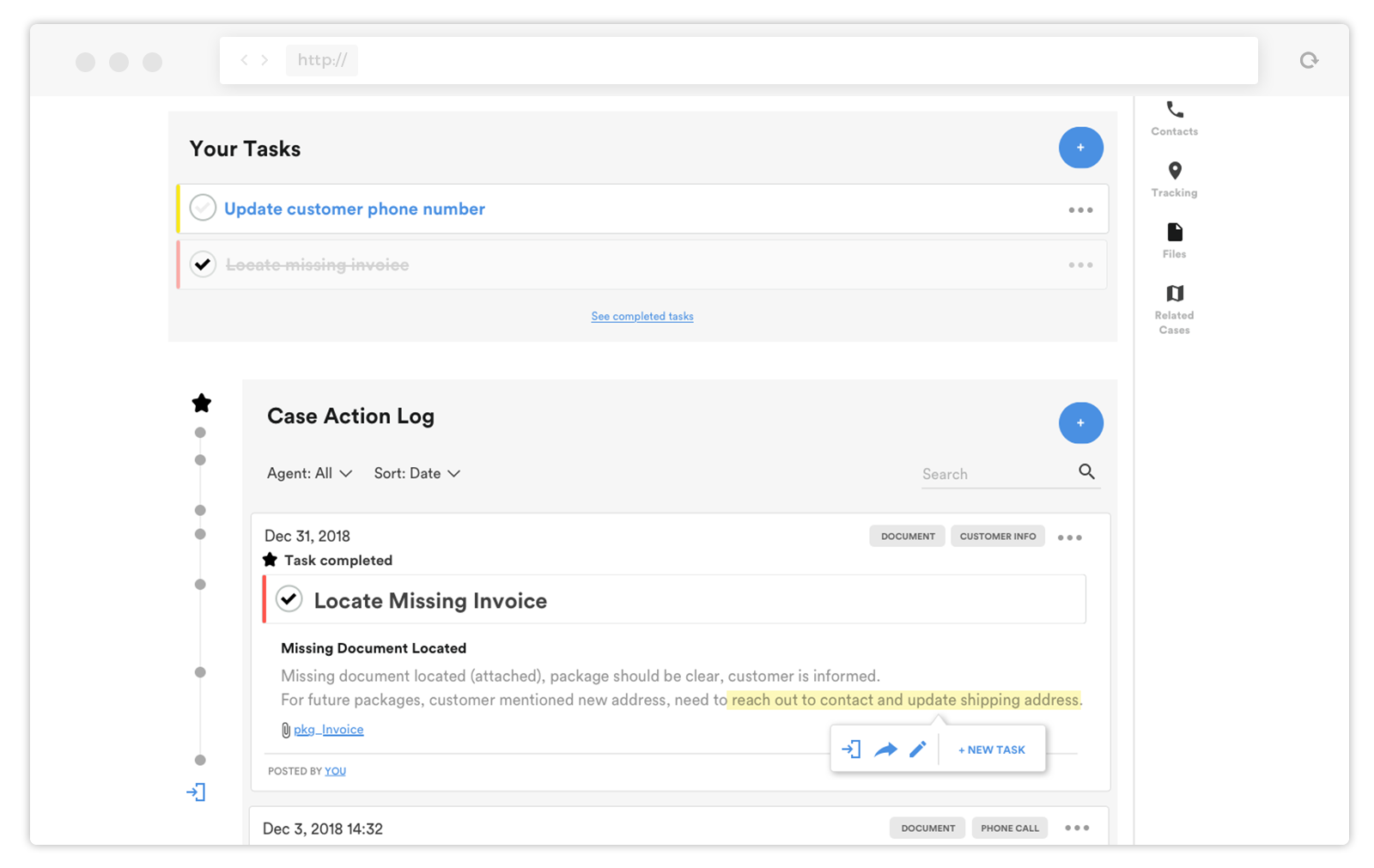
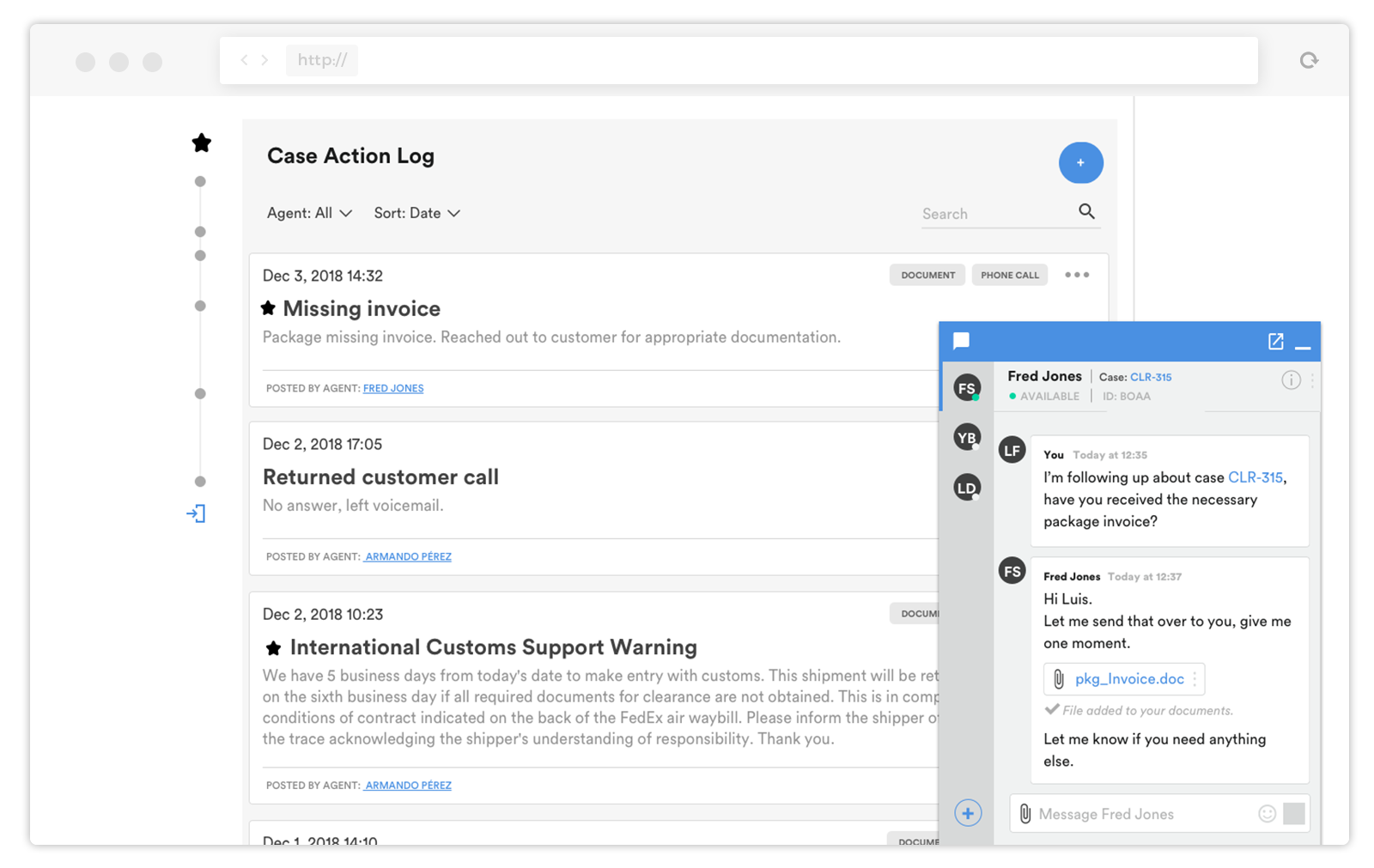
Prototyping/Design
We used my favorite method (OOUX) to determine what all the components – the objects and calls-to-action should be, then thought up a user flow for testing the prototype which would incorporate all the new features organically. As we designed the prototype, we often checked in with the FedEx team to make sure the content and flow made sense to them. We kept the design in a state of high fidelity wireframes as we were testing concepts and on a truncated timeline (this was the week before Christmas and testing began the second week of January!) The end result was a clickable InVision prototype. Click to see it.
User Testing and Results
We faced a challenge when it came to testing our prototype: user testing had already been set up by the company without our input – 100 agents around the world were conscripted to test our barebones prototype, remotely and unmonitored, without the ability to guide them or ask follow up questions.
Not ideal, but fine. We created a set of questions on SurveyMonkey to be kept open adjacent to the prototype to gauge interest in and utility of the new features.
Overall, the prototype was received enthusiastically by both the agents and FedEx leadership. For each new feature, over 75% of users indicated that they preferred it over their existing tools. Here are some comments we heard:
It’s very frustrating to input an urgent update and just cross your fingers and wait for someone at the other end to follow up. Chat is a more feasible response. Real time! —Agent, EU
I’m not the most organized person so a prioritized task list that encompasses my whole job would eliminate time spent deciding what to do. —Agent, Canada
We work as a team. Agents cannot look after the same customer all the time so to reduce task transfer time, the note taking system is very useful. —Manager, APAC
Bonus Innovation!
To close out this project, we presented our work and findings to some important folks higher up in the company and wanted to leave them with a tidbit showing how we could use emerging technology to preempt problems before they start.
How might we prevent packages from getting lost or delayed to begin with? First of all, when customers created their shipping labels, they should be presented with ALL necessary forms, pre-filled if possible. But what to do about the unexpected? Regulatory changes, postal strikes, hurricanes, wars?
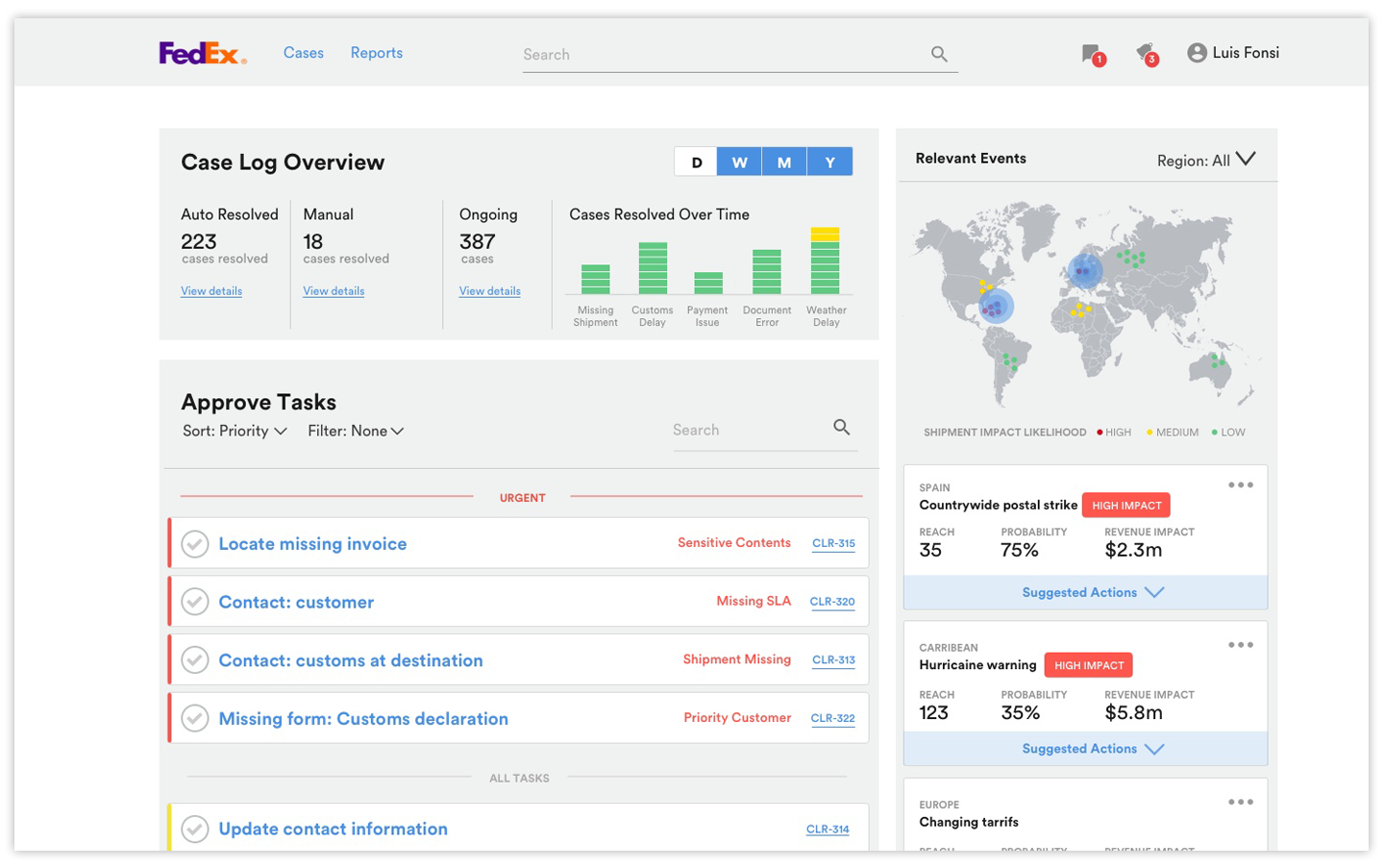
Our solution was a dashboard displaying, on one side, statistics about current shipments and urgent tasks requiring human intervention that the AI wouldn’t be able to handle. On the other side, we came up with a stream showing all events happening around the world, with events affecting large groups of shipments highlighted. In addition, the system would suggest actions to circumvent the problem, such as rerouting packages.
The coolest part was that our instincts turned out to be spot on. FedEx leadership loved it and said they had been dreaming about a similar solution. Case closed!
